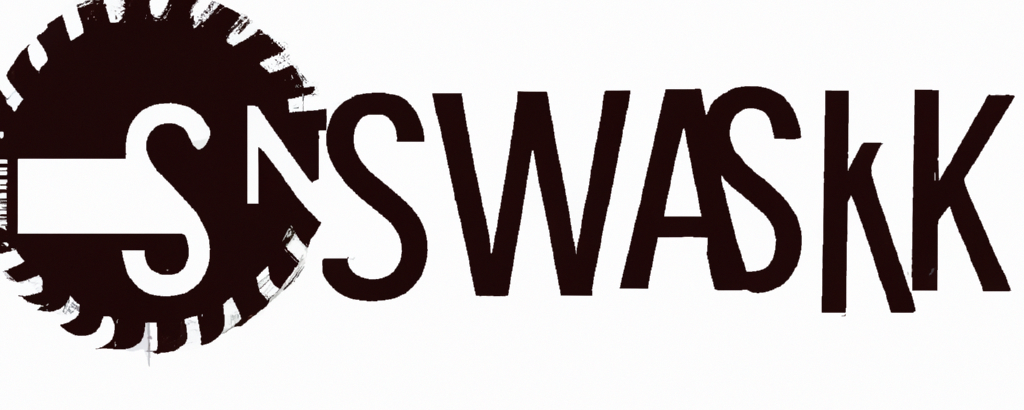Can You Cut Drywall With A Table Saw? Fully Explained

Drywall, a material used for walls and ceilings, is easy to work with. People often wonder if they can use a table saw to cut it.
Although you can technically cut drywall with a table saw, it’s generally not a good idea. This is because it can be unsafe and create a lot of dust and mess. On the other hand, table saws work best for cutting materials like acrylic. So, it is important to consider the appropriate use of a table saw for different materials.
This article will explain why using a table saw for cutting drywall is not recommended. We’ll also share the best tools for cutting drywall and some tips for using a table saw with large drywall sheets.
Excited to learn more? Let’s dive in!
Overview Drywall
Drywall, or gypsum board or plasterboard, is a common building material for indoor walls and ceilings. It consists of a gypsum core sandwiched between two layers of paper or fiberglass.
Drywall is easy to install; you can cut it to the right size with various tools.
Should You Use a Table Saw for Cutting Drywall?
Using a table saw to cut drywall is not a good idea. Here’s why:
Safety Concerns:
Using a table saw to cut drywall can be risky. The saw’s blade can easily get caught on the material, leading to kickbacks or accidents.
Messy Dust:
Cutting drywall with a table saw can create a lot of dust and debris. Cleaning it up can be a hassle, and breathing in the dust can be harmful.
Overkill:
Drywall is a soft material that can easily be cut with a utility knife or other hand tools. Using a table saw might be unnecessary and won’t significantly speed up the process or improve accuracy.
What’s the Best Tool for Cutting Drywall?
Several tools are better suited for cutting drywall:
Utility Knife:
A utility knife is the most common choice for cutting drywall. It’s affordable, easy to use, and can make precise cuts.
Drywall Saw:
This handheld saw has a pointed tip for quick and easy drywall cuts. It’s also cost-effective and ideal for making cuts for outlets, switches, and fixtures.
Rotary Tool:
Tools like a Dremel are perfect for precise drywall cuts, especially for creating holes for electrical boxes and fixtures.
Jigsaw:
Though less common, a jigsaw is handy for making curved cuts in drywall and has specific applications.
How to Safely Cut Large Drywall Sheets with a Table Saw:
Even if you decide to use a table saw for cutting drywall, follow these tips:
Sharp Blade:
Always use a sharp blade to prevent tearing or crumbling of the drywall, ensuring a clean cut.
Dust Collection System:
Use a dust collection system when cutting drywall with a table saw to reduce dust.
Fence:
A fence can guide the drywall through the saw for a straight cut.
Slow and Steady:
Cutting too quickly can lead to messy results, so take your time.
Protective Gear:
Wear safety equipment like a dust mask, safety glasses, and gloves when using a table saw to cut drywall.
Can You Use a Keyhole Saw for Cutting Drywall?
Yes, a keyhole saw is suitable for cutting drywall quickly and easily. It’s especially useful for removing sections of drywall during repairs or renovations.
What’s the Rule for Cutting Drywall?
Cutting drywall involves measuring and marking the desired dimensions then using the right tools. Use a utility knife for straight cuts, and for curves and openings, use a drywall saw.
Safety gear is essential. Score the drywall with the knife, double-checking for a clean cut. For outlets, create pilot holes and cut them with a keyhole saw.
For long straight cuts, use the score and snap technique. Finally, tidy up the edges for a smooth finish and securely hang the drywall.
How to Achieve Clean Drywall Cuts?
Precise, clean cuts in drywall rely on the right tools and techniques. You’ll want to have at your disposal a sharp utility knife, a straightedge (like a t-square or framing square), and a stable sawhorse or a flat surface. Let’s break down the process for achieving these pristine cuts:
1. Measure and Mark:
Begin using a tape measure and a pencil to mark the desired cut line on the front side of the drywall.
2. Score the Cut Line:
Next, employing a sharp utility knife, score along the cut line along the edge of your chosen straightedge. Ensure the score is deep enough to penetrate the paper and reach the gypsum core.
3. Snap the Drywall:
Place the drywall on your sawhorse or a flat surface with the cut line facing upwards. Here, apply even pressure along the cut line, gently bending the drywall away from the scored side.
This method should result in a clean, precise break along the cut line.
4. Cut the Back Paper:
To complete the process, use your utility knife to cut through the paper on the back side of the drywall.
Conclusion
In Conclusion, While it’s technically possible to use a table saw for cutting drywall, it’s generally not recommended due to safety concerns and the potential for creating a lot of dust and debris.
Instead, we suggest using hand tools like a utility knife, drywall saw, rotary tool, or jigsaw for cutting dense materials like drywall, MDF, etc. If you need to remove sections of existing drywall, consider an oscillating tool or reciprocating saw.
For clean cuts, score the drywall with a razor knife, use a straightedge as a guide, and snap it along the marked line.
